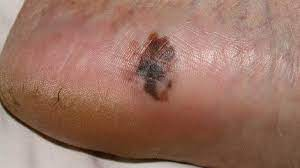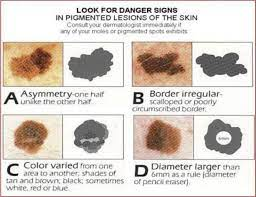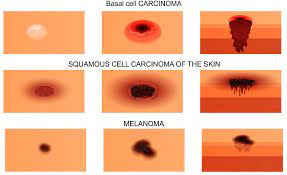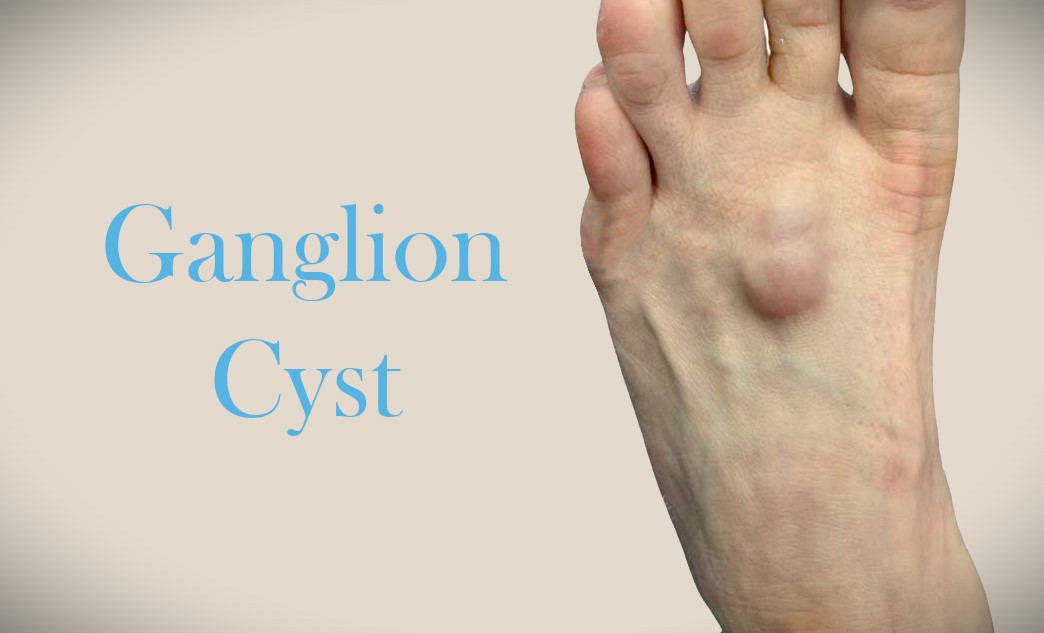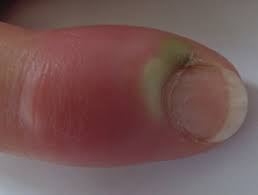Skin Cancers of the Foot: Detection and Care
Skin cancer, a prevalent health concern globally, manifests in various forms and can affect different parts of the body, including the feet.
Often overlooked, the feet can be a significant site for skin cancers and other skin conditions, necessitating awareness and vigilance. This article aims to shed light on the types of skin cancers that can occur on the foot, their signs and symptoms, and the importance of early detection and care.
By understanding these aspects, individuals can be better prepared to identify and address potential skin cancer issues, particularly those affecting the foot area.
In this article, we’re going to discuss skin cancer and your feet, including the types of skin cancer that can impact the feet and the signs you need to keep an eye out for.
What types of skin cancer can affect the feet?
Skin cancers that can affect the foot include basal cell carcinoma, squamous cell carcinoma, and melanoma. Basal cell carcinoma and squamous cell carcinoma are the most common types, typically appearing as abnormal growths or sores on the skin. Melanoma, though less common, is the most dangerous type of skin cancer and can develop from existing moles or as new growth. It’s crucial to be aware of these types and their potential manifestations on the foot, as early detection is key for successful treatment.
Signs and symptoms of skin cancer on the foot
Early signs and symptoms of skin cancer on the foot can vary depending on the type.
Basal cell carcinoma often appears as a small, raised bump that may be shiny, pink, or red, while squamous cell carcinoma can present as a scaly or crusted growth with potential ulceration.
Melanoma may exhibit an irregularly shaped mole or dark spot with asymmetry, uneven borders, colour variations, or changes in size. Other symptoms may include itching, bleeding, or pain. It’s essential to regularly inspect your feet, including the soles, nails, and between the toes, and consult a healthcare professional if you notice any suspicious changes or growths.
Risk factors associated with developing skin cancers on the foot
Several risk factors are associated with developing skin cancers on the foot. Prolonged and repeated exposure to ultraviolet (UV) radiation from sunlight or tanning beds is a significant risk factor.
Unfortunately, Australia is a country that has particularly high UV and one of the higher skin cancer rates in the world, so it is especially important here to be on top of checking for issues.
Fair skin, a history of sunburns, family history of skin cancer, and having numerous or atypical moles can also increase the risk.
Additionally, occupations or activities that involve prolonged sun exposure, such as outdoor sports or working outdoors, may contribute to the risk. It’s important to be aware of these risk factors and take appropriate preventive measures, such as using sunscreen, wearing protective footwear, and limiting sun exposure, especially during peak hours.
Do certain parts of the foot get skin cancers more frequently?
Skin cancers on the foot can occur in various areas, but certain locations are more commonly affected.
For basal cell carcinoma and squamous cell carcinoma, the most common sites are the soles of the feet, areas between the toes, and around the nails. Melanoma can occur anywhere on the foot, including the soles, nails, and even between the toes and often the top of the foot where it is exposed to sun. These areas are often exposed to sunlight and may receive less attention during self-examinations, making it important to thoroughly check the entire foot for any suspicious growths or changes.
Remember to inspect even hard-to-see areas and seek professional medical advice if you notice anything unusual.
Footwear and skin cancer – do shoes matter?
While there is no direct correlation between specific types of footwear and skin cancer, wearing open-toe or thin-strapped sandals exposes the skin on the feet to more sunlight and UV radiation.
Prolonged sun exposure without protection increases the risk of skin damage and potential development of skin cancer. Therefore, it’s advisable to wear closed-toe shoes or shoes with a tight weave that provide better coverage and protection from the sun’s harmful rays.
Additionally, wearing socks can provide an additional layer of protection, particularly if they are made from UV-protective materials. However, it’s essential to remember that footwear alone cannot entirely eliminate the risk of skin cancer, so combining it with other preventive measures like sunscreen and limited sun exposure is crucial.
UV protection and your foot
Protecting your feet from harmful UV radiation is essential to reduce the risk of skin cancer. Start by applying sunscreen with a high SPF (Sun Protection Factor) to all exposed areas of your feet, including the tops, soles, and around the nails. Don’t forget to reapply regularly, especially after swimming or sweating.
Seeking shade or using umbrellas when spending time outdoors can also help minimise direct sun exposure. Wearing wide-brimmed hats and sunglasses provides further protection for your face and eyes.
Additionally, consider wearing UV-protective clothing and accessories, such as UPF (Ultraviolet Protection Factor) rated socks, to shield your feet from harmful rays. By incorporating these measures into your daily routine, you can significantly reduce the risk of skin cancer on your feet.
Treatment options for skin cancers on the foot
Treatment options for skin cancers on the foot depend on factors such as the type, size, location, and stage of the cancer. In many cases, surgical excision is the primary treatment method, where the cancerous tissue is surgically removed along with a safety margin of healthy tissue. Mohs surgery, a specialised technique for removing skin cancers, may be used for larger or more aggressive tumors. Other treatments may include cryotherapy (freezing the cancer cells), radiation therapy, topical medications, or, in some cases, targeted therapy or immunotherapy.
The choice of treatment will be determined by a healthcare professional based on an individual’s specific situation. It’s crucial to consult a podiatrist or dermatologist for proper diagnosis and treatment planning.
Can skin cancer on the foot spread to the rest of my body?
Skin cancer on the foot can potentially spread (metastasize) to other parts of the body, although it is relatively uncommon. Melanoma, in particular, has a higher likelihood of spreading if not detected and treated early. The lymph nodes in the groin or the nearby bones may be the first areas affected by metastasis.
To prevent the spread of skin cancer on the foot, it’s crucial to seek medical attention promptly if you notice any suspicious growths, changes, or symptoms. Early detection and treatment significantly increase the chances of successful outcomes and minimise the risk of metastasis. Regular self-examinations, coupled with professional evaluations, can help ensure timely intervention and appropriate management.
Prevention is better than cure: Self-examination and preventive measures for skin cancer on the foot
Preventive measures and self-examination techniques are important for early detection of skin cancer on the foot.
Conduct regular self-examinations of your feet, looking for any changes in moles, new growths, or unusual skin lesions. Pay attention to any changes in size, shape, colour, or texture of existing moles or the development of new moles. Use a mirror or ask a family member or friend to help inspect hard-to-see areas, such as the soles and between the toes. If you notice any suspicious growths, changes, or persistent symptoms such as itching, bleeding, or pain, it’s essential to consult a healthcare professional for further evaluation and guidance.
Additionally, consider scheduling regular check-ups with a podiatrist or dermatologist to ensure comprehensive foot health.
Seeking professional help
It’s important to seek professional medical help for any suspicious growth or lesion on your foot. If you notice any unusual changes, such as new growths, changes in colour, size, shape, or texture, or persistent symptoms like itching, bleeding, or pain, it’s advisable to consult a healthcare professional.
A podiatrist or dermatologist with expertise in skin cancers can provide a thorough evaluation, including a visual examination and, if necessary, a biopsy to determine the nature of the growth or lesion. Early diagnosis and intervention are crucial for successful treatment outcomes, so it’s always better to err on the side of caution and seek medical attention if you have any concerns about your foot health. Remember, prompt action can potentially save lives and ensure optimal foot health.
The Takeaway
Being aware of the risks and signs of skin cancers on the foot is crucial for maintaining optimal foot health. Regular self-examinations and seeking professional medical help for any suspicious growths or lesions are essential steps in early detection and timely intervention.
If you’re concerned about the health of your feet, don’t hesitate to reach out to Hurst Podiatry. We’re here to help you take care of your feet in Melbourne today.
Book a consultation here for any concerns related to skin cancers on the foot or any other foot health issues.

